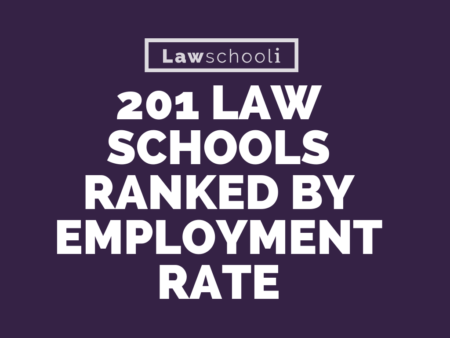The ever-influential US News and World Report’s ranking of top US law schools are out!
Here is a full list of the 2021 rankings compared to the 2020 rankings:
Here are our answers to some FAQs about the Best Law Schools Rankings for those trying to sort out what this all means.
What do the USNWR rankings measure?
The bulk of the weight (40%) in these rankings comes from “peer-assessment scores,” evaluations from professors, judges, firm hiring partners, and other eminent members of the legal field. These peer-assessment scores are a relatively good measure of a school’s prestige and the perception of the quality of its graduates.
The next most significant component is the school’s selectivity (25%), as measured predominately by incoming students’ median LSAT and GPA scores. A tiny bit of this part of ranking comes from a school’s acceptance rate, although this has been deemphasized, perhaps because it is easy for schools to game. Measuring median LSAT and GPA scores is a good proxy for determining which schools can attract the most desirable applicants.
The next part (20%) is placement success, which measures a school’s ability to place students into desirable full-time legal positions. Luckily, more data has become available on this for the USNWR to measure, and rankings changes in recent years likely reflect that. In addition to job placement numbers, a small portion of placement success is determined by the school’s bar passage rates.
Faculty Resources (weighted at 15%) includes data such as how much a school spends per student and that school’s student-to-faculty ratio. Many have been critical of these criteria for helping to drive the rising cost of legal education.
Despite criticisms, the USNWR rankings do a reasonably good job of measuring the broader perception in the legal world regarding the relative prestige of law schools. Given the importance of prestige in this profession, it is kind of a big deal. All things being equal, schools that rank higher on this list tend to provide better opportunities overall.
But How Much Do The Rankings Really Matter?
A lot, frankly, but there are limitations. Closely-ranked schools tend not to be significantly different in terms of objective measures, so small changes in ranking year-to-year don’t necessarily tell you anything about the underlying quality of a school.
It is also worth noting that the further you get outside of the T14, schools have more of a regional reputation than a national one, so it gets harder to compare schools. Peer assessment scores, in particular, might tell us less and less about schools as you move down the rankings ladder. Whereas there is a huge difference between Yale and Georgetown, there may not be, for example, too much of a difference between the quality of a school ranked 65 and one ranked 80.
What is the T14?
The Top 14 Law Schools (commonly known as the T14) are the fourteen schools, each with a solid national reputation, that have historically held the top fourteen spots in nearly every year since the US News began making these rankings.
While Georgetown Law was edged out of the T14 last year, it regained its position as the historical gatekeeper of the T14. While there are small shifts within the T14 from year to year, six schools have consistently held the top six spots for most of the last several decades: Yale, Stanford, Harvard, University of Chicago, Columbia University, and New York University.
Once you leave the top fourteen, you tend to get more regarded as regional powerhouses, although some still have significant national pull.
How Should I Use The Rankings?
If you are a prospective student, you should always use the rankings as a baseline in your evaluations. They help introduce students to the hierarchy in the legal world, which for better or for worse, is very real. However, they do not give you much granular information as to what kind of jobs you can obtain from various schools. We recommend Law School Transparency as a great place to start your closer analysis of the kinds of job placement schools can provide.




1 Comment
This chart might be deceiving for some readers. First, the years are in reverse chronological order reading from left to right. Then, the chart counts dropping rank as + in green and increasing in rank as – in red. This suggests that dropping rank (bigger number) is good and increasing rank (smaller number is bad).